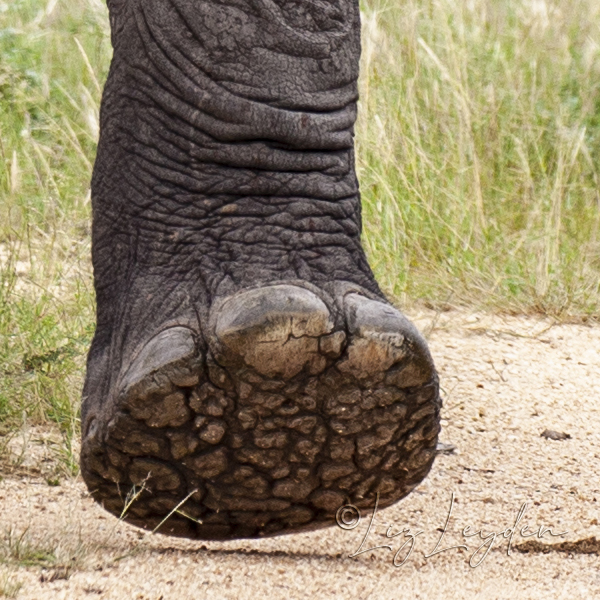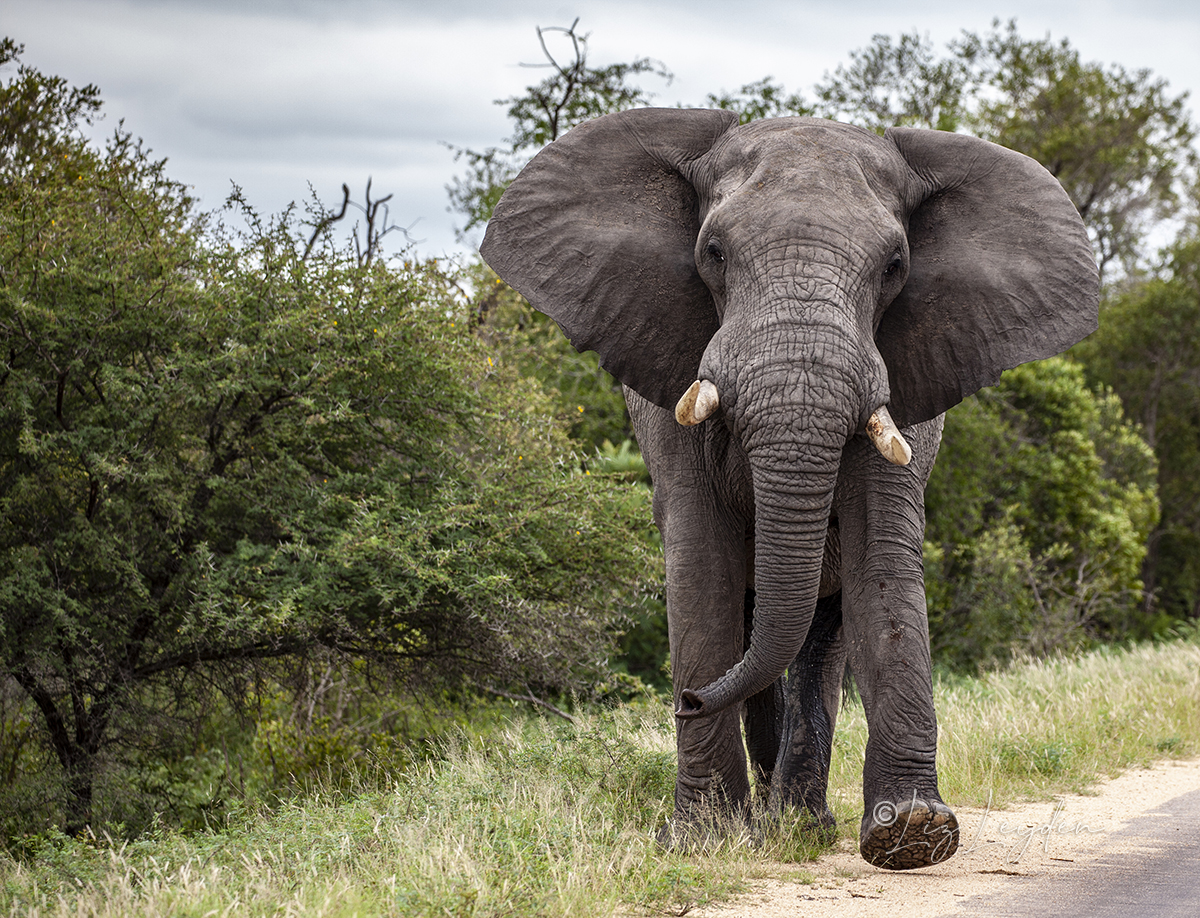A large Bull African Bush Elephant, Loxodonta africana, in full musth, mock-charging in Kruger National Park, South Africa.
Musth is caused by a huge surge of testosterone, about 60 times the usual amount, and it makes even usually very calm bull Elephants aggressive. A concentration of proteins, lipids and other substances collectively known as temporin build up in the temporal glands at the side of the elephant’s heads. The build-up pushes on the elephant’s eyes and may be another reason for the aggression. The temporin comes out of temporal ducts on their heads, and is a good indication of the state of musth.
In addition, male elephants in musth tend to dribble urine, as can be seen in this image. This has a particularly pungent smell – analysis has shown that both temporin and the specific urine produced during musth has high concentrations of ketone and aldehydes, contributing to the distinctive smell.
Bull elephants in musth can be unpredictable and dangerous, to other animals, even their own calves, people and vehicles.

This detail from the main image shows the sole of the elephant’s foot, showing the toenails and the ridges which are as individual as a fingerprint. The tonails give away the fact that the elephant is effectively walking ‘on tiptoe’. The sole is made up of fatty, spongey connective tissue which acts as a shock absorber. Its toes are buried inside this supporting tissue. The feet can make indentations in the ground in which water can gather, and can help elephants to dig up roots.
This photo is copyright © Liz Leyden, all rights reserved.
It is available for purchase as a stock photo from GettyImages or from iStock.


